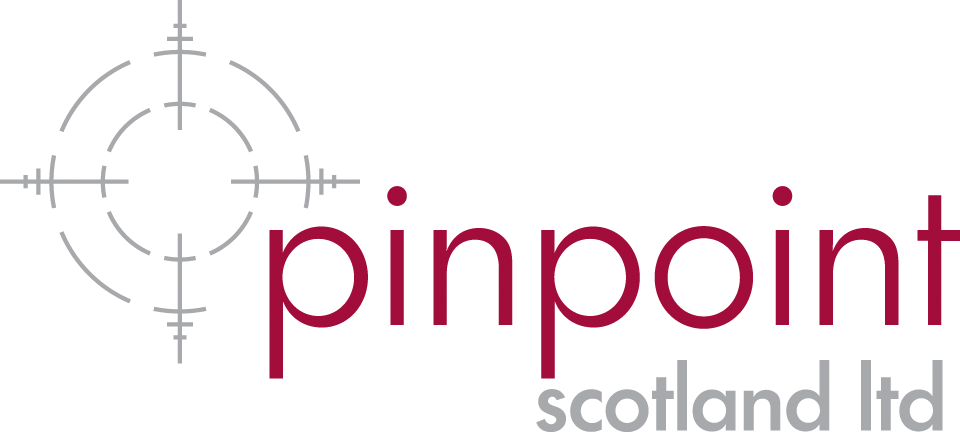Transoral flexible laser surgery refers to the use of a fibre-delivered laser for laryngeal procedures via direct laryngoscopy. We hear of a novel innovation.
The continuous development of instruments to perform endoscopic procedures for treatment of laryngotracheal pathology – among them, fibre-guided angiolytic lasers – is a milestone in the practice of laryngology. The latest technology is the blue laser (445 nm TruBlue®).
The most significant advantage is the ability to accurately deliver laser energy to interact with tissues, making it easier for surgeons to perform minimally invasive procedures. Blue laser offers improved recovery when treating different laryngeal pathologies [1].
The use of fibres allows access to anatomical areas previously very difficult to treat, unless neck incisions and invasive airway procedures were carried out; it also remarkably reduces complications and facilitates faster recovery. A great advantage of these techniques is the possibility to reach structures located below the glottis.
According to a consensus statement of the European Laryngological Society, this technique belongs to the group of Transoral Flexible Laser Surgery (TOFLS) [2]. Under direct laryngoscopy, a system is required (either a microscope or a rigid or flexible endoscope) to visualise the position of the fibre tip in relation to the lesion being treated. An instrument must also be used to deliver the fibre to the treatment point with the greatest possible precision. For TOFLS procedures, the easiest way to achieve this is by passing the fibre through the lumen of a microsurgery suction tube. When operating with the surgical microscope, visual control of the fibre’s tip is difficult, despite using the highest magnification. The distal end must be taken well beyond the tip of the guiding tube in order to be able to observe this through the microscope. As the fibres are flexible, if these come into contact with the tissue when cutting or dissecting, they will bend and be more difficult to manipulate because of adherence to laser-treated tissues.
"The use of fibres allows access to anatomical areas previously very difficult to treat, unless neck incisions and airway invasive procedures were carried out"
Another method of ensuring visual control of the fibre is for the surgeon to guide it with the microsuction tube in one hand and a 0º rigid endoscope in the other. This provides excellent visualisation as the endoscope accompanies the fibre directly to the point of pathology (Figure 1).

Figure 1: The laser fibre is guided with a microsurgery suction tube in the left hand and a 0º endoscope in the right for treatment – in this case, of a superficial laryngeal carcinoma.
However, if performed in this manner, the great disadvantage is that both hands are occupied and, if an additional instrument to the laser is required, the available workspace is reduced through a surgical laryngoscope. Introducing any other instrument to perform traction or assisting with tissue dissection then becomes virtually impossible.
Technique development
After making multiple attempts using simulation methods in the research laboratory to guide the fibre through a surgical laryngoscope, it was concluded that the better way was to combine the guiding and visualisation techniques. Tests were done by mounting the fibre, initially on top of a rigid 0º, 5-mm-diameter endoscope. However, it was observed that the tip of the fibre should be located at a considerable distance from the distal end of the endoscope and that the same problem of flexibility that prevented adequate displacement of the fibre over tissues was evidenced when cutting or dissecting in contact mode. Trials were then made with a 30º, 5-mm-diameter endoscope, fixing the fibre in its upper part, which allowed ideal visualisation having an ample close-up visual field of the area to be treated with a high level of detail. The distance between the fibre tip and the distal end of the endoscope was reduced, which very adequately solved the problem of flexibility.
This technique was applied in the operating room. As the airway is shared between the anaesthesiologist and the surgeon, the working field is considerably reduced, making instrument manipulation difficult for any kind of laryngotracheal surgery. As such, any lesion or structural problem located below the glottis cannot be treated when using a traditional endotracheal intubation technique for ventilation. We use two different anaesthesia techniques – either TIVA with jet ventilation or supragottic ventilation, with inhalatory anaesthesia under spontaneous patient breathing [3]. These methods provide better working conditions without the interference of a large endotracheal tube, A word of caution: the airway is not fully assured.

Figure 2: a) Once the tip of the fibre is exactly in the middle of the video screen, it can be fixed. b) The fibre is stable and it is guided by the endoscope to accurately reach the area to be treated.

Figure 3: The correct position of the fibre with respect to the endoscope.
Fibre fixation to the endoscope
- The fibre is placed on top of the 30º, 5-mm-diameter endoscope (the field of view with an endoscope of lesser diameter is unsatisfactory).
- The best position of the fibre is achieved by looking at the video monitor. Once the tip of the fibre is exactly in the centre of the screen (Figure 2), it is fixed with Steri-StripTM. The first band of Steri-Strip™ is placed a couple of millimetres away from the superior edge of the endoscope, firmly holding the fibre and surrounding the entire circumference of it, and reinforcing with a second band over the first one. Then two more bands are used to hold the fibre in the same manner in the middle and posterior ends of the endoscope (Figure 3). Recently, a disposable custom-made steel tube to pass the fibre through has been tried, fixed just the same way on top of the endoscope. The advantage of the latter is that it is easy to interchange 300 µm and 400 µm fibres as needed (Figure 4).

Figure 4: The Steri-StripTM bands holding the fibre on top of the endoscope.
Dealing with fogging
Fogging is always a problem when using endoscopes within the airway. Hot water is the preferred method to achieve the anti-fog effect for a reasonable time but, in our technique, it is unadvisable because the Steri-StripTM becomes wet, loosens and can fall into the lower airway. The best way, then, is to very lightly dampen a gauze with surgical soap over a very small area, pass the gauze against any fabric surgical sheet placed over the patient to remove the excess, then rub it thoroughly over the endoscope lens. Immediately, pass a dry area of the gauze again over the lens to remove any residual soap that could alter visualisation and you are ready to work for a good number of minutes. It is indeed advisable to use a surgical laryngoscope which has a suction system incorporated because it reduces the chances of fogging.
"When combining this mechanism of guidance of the fibre with the visual control system, a higher precision for the treatment of diverse laryngotracheal pathologies is achieved"
When working in the subglottis or the trachea, the chances of fogging are greater. In this case it is advisable to use a very small-diameter suction tube that is placed close to the tissues to remove steam and smoke.
Clinical cases
When combining this mechanism of guidance of the fibre with the visual control system, a higher precision for the treatment of diverse laryngotracheal pathologies is achieved with ongoing fibre visualisation and monitoring of the effect of the laser energy in the area of work.

Figure 5: a) Papilloma of the posterior wall of the distal trachea (arrow). b) The lesion is blanched and vaporised with great precision, with the laser in contact mode under excellent visual control.
The advantage of the 30º endoscope is the possibility to rotate this 360º on its own axis, precisely directing the fibre to any point on the circumference. Figure 5 illustrates the treatment of a papilloma in the posterior wall of the lower trachea using this method.

Figure 6: a) Intraoperative view of an epidermoid carcinoma (T2) of the left vocal fold. b) Epithelial incision with the blue laser. c) Progressive subepithelial dissection with the laser with the aid of a microsurgery instrument. d) Endoscopic view after complete resection. e) Laryngoscopic examination 12 months postop. Adequate epithelial healing, no evidence of relapse.
Figure 6 illustrates the process of selective en bloc resection on a case of a T2 epidermoid carcinoma of the left vocal fold. Cutting is indeed possible with blue laser [4]. The dissection boundaries in these cases are previously determined through careful observation of the area with NBI.

Figure 7: a) Post-intubation tracheal stenosis in a 55-year-old male (1.7 cm distal extension). b) Dissection of the anterior portion of the stenotic ring with the blue laser in contact mode. The position of the fibre and the effect of the laser can be constantly observed. c) Endoscopic view after performing three radial incisions with the laser and consecutive balloon dilation. d) Laryngotracheoscopy six months postop. Satisfactory, stable reopening of the airway, the patient is asymptomatic.
Figure 7 demonstrates the treatment of a concentric, thick (1.7 cm length) tracheal stenosis. The fibre tip is clearly visualised and the effect of the laser on treated tissues can be monitored directly.
Conclusions
Laryngotracheal surgery performed by means of TOFLS procedures using fibre-guided blue laser attached to a 30º 5-mm-diameter surgical endoscope is a complex and time-consuming process, requiring close and coordinated work with anaesthesiologists and surgical nurses skilled in all aspects of these interventions. The effort ensures the highest degree of precision while performing surgery in a confined space. Other techniques do not provide the high level of visual clarity on the effects of the laser and the progression of treatment. Careful tissue manipulation with avoidance of injury to surrounding tissues uninvolved by pathology ensures reduced morbidity and better functional results.
References
1. Bhat AM, Marrero-Gonzalez AR, Nguyen SA, et al. Photoangiolytic Lasers for Treatment of Benign Laryngeal Lesions: A Systematic Review and Meta-Analysis. Laryngoscope 2024;134(12):4847–57.
2. Remacle M, Arens C, Eldin MB, et al. Laser-assisted surgery of the upper aero-digestive tract: a clarification of nomenclature. A consensus statement of the European Laryngological Society. Eur Arch Otorhinolaryngol 2017;274(10):3723–7.
3. Campos G, Amaya O, Valencia J, Arango L. Transoral flexible laser surgery of the upper aerodigestive tract with blue laser. Eur Arch Otorhinolaryngol 2023;280(2):765–74.
4. Hess MM, Fleischer S, Ernstberger M. New 445 nm blue laser for laryngeal surgery combines photoangiolytic and cutting properties. Eur Arch Otorhinolaryngol 2018;275(6):1557–67.
Declaration of competing interests: GC has a cooperation agreement (with no financial compensation) with A.R.C. Laser for research (blue laser / tissue interaction and clinical applications). GC has been paid by A.R.C. Laser for instructional activities.





